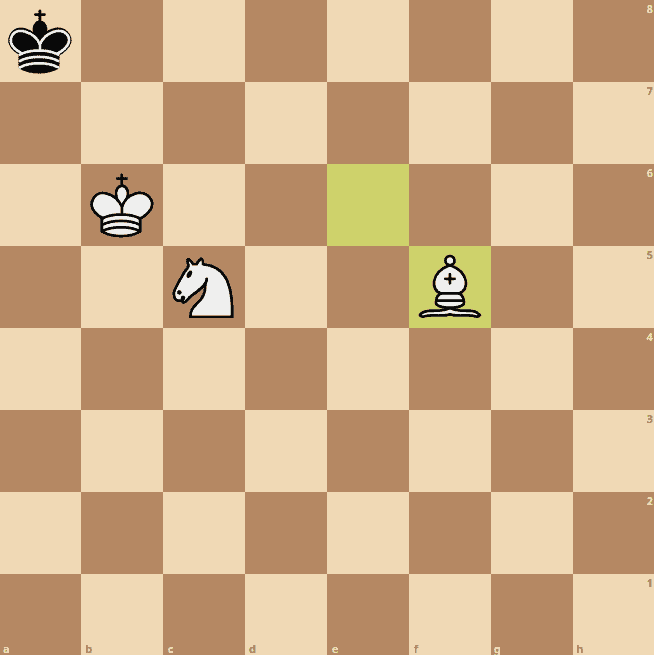

You can use this to your advantage if your opponent has pieces (especially pawns) on both sides of the board. Meanwhile, the knight can only move a small distance each turn and it takes several turns extra to move your knight from one side of the board to the other.

Since the bishop is a long-range piece, it can influence both side of the board if it’s on a good square. Endgames with pieces on both sides of the board If your opponent’s pawns are on the opposite color as your bishop, you won’t be able to threaten them at all, and you end up with a useless bishop.Īlso note that it’s important to fix your opponent’s pawns on the right color by blocking them with your own pawns or pieces.Įlse, your opponent will be able to move them to safety after you attack them.īelow you can see that the white pawn on c5 fixes black’s b7 and c6 pawns on the same color as the light-squared bishop. This will make sure that your bishop always has some targets to aim for. So when the game transitions from the middlegame to the endgame, you want to try and fix your opponent’s pawns on the same color as your bishop. Your bishop will only be a strong piece if it has something it can actually attack. Your opponent’s pawns are fixed on the same color as your bishop Keep in mind that although a pair of bishops work together to cover all the squares on the board, they can’t attack the same target unlike the pair of rooks.

Moreover, you can checkmate your opponent with a king and two bishops, but not with a king and two knights.Īs a result, a bishop pair is generally considered to be stronger than a knight pair.īelow you can see how two bishops complement each other to control a lot of squares on the board. And as long as you can keep this pair of bishops alive, they can correct for each other’s weaknesses. That means that a single bishop can only influence half the squares on the board.Īt the beginning of the game, you start with a light-square bishop and a dark-square bishop. This is because bishops are long-range pieces, and having too many pieces still left on the board often limits the scope of your bishops.ĭon’t forget that bishops can be blocked by both the opponent’s pieces and your own.Īs a result, if you have the bishop, it is generally a good idea to trade off several pieces to open up the position.īelow you can see an open position that favors the bishop.īishops can only move to other squares of the same color. Open positionsīishops prefer open positions, which normally means that several pawns have already been traded. If you can recognize one or several of these in your position, it’s probably a good idea to trade your knight for the bishop.

Let’s look at 5 different cases when a bishop is stronger. So let’s take a look at different scenarios and see which is more powerful: the bishop or the knight. Of course, this is a direct result of the different ways that each piece moves. This means that the bishop and knight are not always worth the same, and their value can depend on the concrete position on the board. However, it’s important to realize that these values are just rough estimates and that they are averaged over a lot of games. If you are familiar with the standard point system used for all the pieces, you know that both the knight and bishop are worth 3 points. Let’s take a look at bishop vs knight material imbalance and which piece is stronger in specific situations. And learning when to trade a knight for a bishop (and vice versa) is an important concept in chess strategy. The answer is that the bishop and knight are strong in different types of positions. The bishop and the knight move completely different.īut unexpectedly, both these pieces are generally considered to be worth the same amount of points. And as a result, not every piece is equally powerful.


 0 kommentar(er)
0 kommentar(er)
